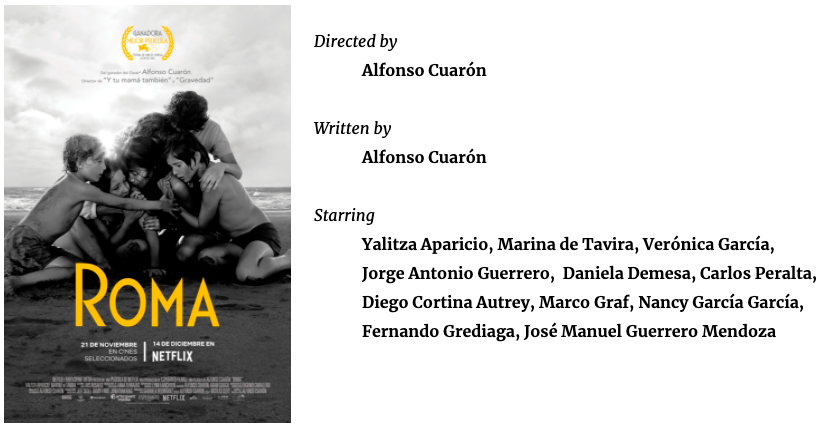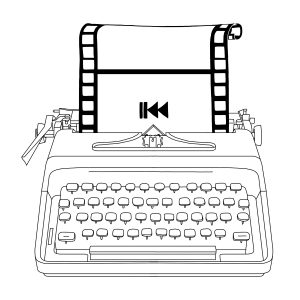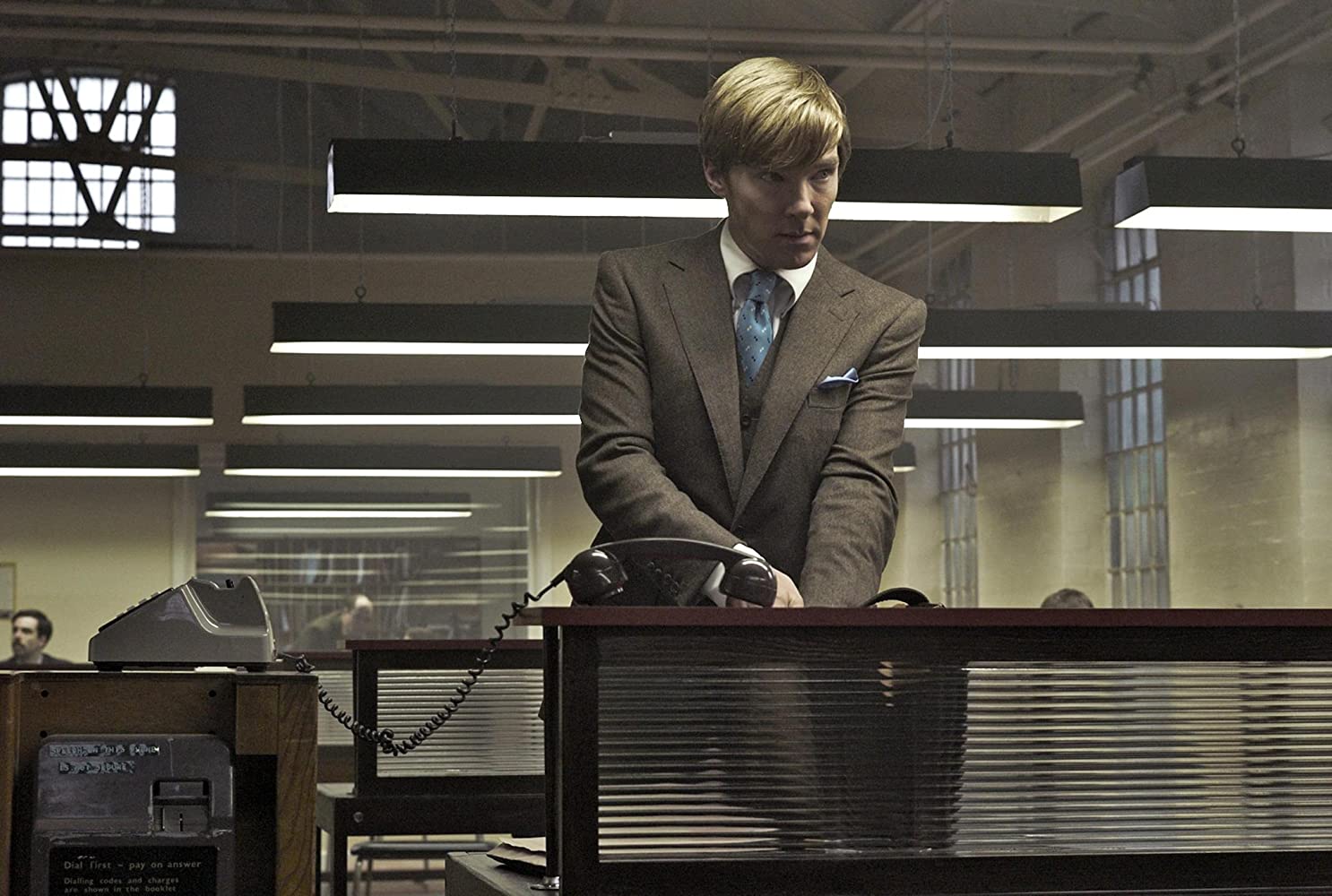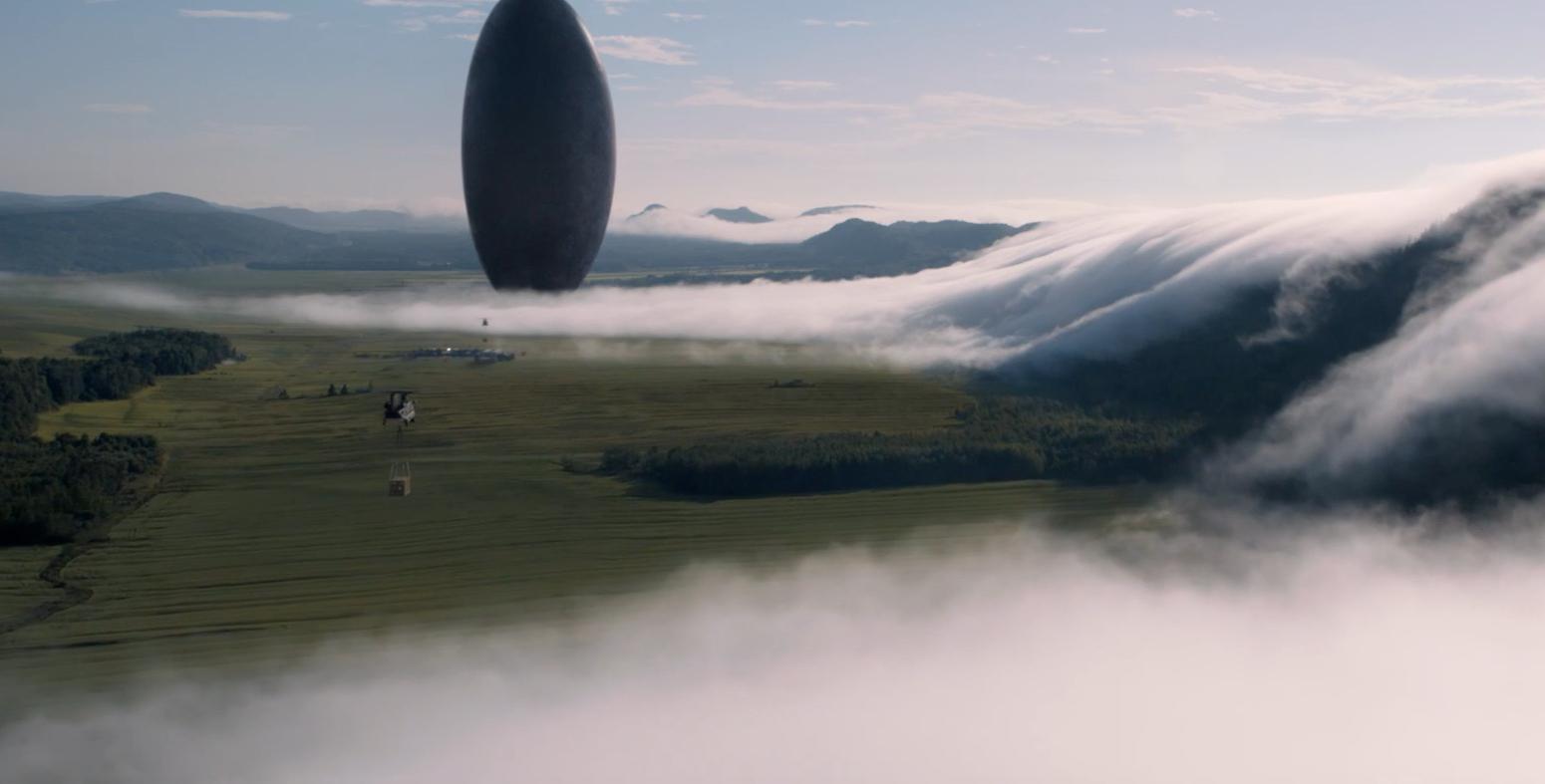
How do you do something original in cinema these days? Nostalgists have been asking that question for decades, usually to imply that you can’t, because the best days of film are long gone. Minus that cynical subtext, though, it’s an interesting question, and for most of the short history of film, the go-to response has been the advance of technology: As cameras get better and the capabilities of special effects expand, so do the boundaries of what can be shown onscreen. That’s true, but recently—like, very recently, within my own lifetime and lately enough for me to have noticed—something seems to have shifted. Filmmaking technology continues to improve, but it seems to have reached an inflection point; for about five to ten years now, it’s been truly possible (with sufficient financial resources, of course) to put basically anything onscreen, convincingly enough to fit into a live-action movie. (The possibilities of animation have always been wonderfully boundless.) That needn’t mean the end of originality or novelty—when anything is possible, the opposite should be true. But with the rise of the Marvel-verse and the global, multibillion-dollar blockbuster, it can often seem like all the innovation is going towards the same stuff: ever more epic battles, ever wilder and more outrageous action, fantastical creatures and far-off worlds rendered in ever more breathtaking detail. Which is great fun, and can result in great art, but if you love film, it leaves you wanting more.
So it’s especially impressive, and feels like a special gift, when a movie reminds us that it’s not that simple—that the possibilities for innovation are infinite and always have been.
You could hardly find a better candidate to make such a movie than the Mexican director Alfonso Cuarón, a filmmaking virtuoso who has managed to stay refreshingly selective about where he deploys his talents. He first gained international recognition with A Little Princess (1995) and Great Expectations (1998), adaptations of old-timey English novels that had little else in common. Then he returned to Mexico, ditched the high-tech equipment, the Hollywood stars, even the fixed screenplay, and proceeded to make one of the best (and sexiest) road movies of all time: Y tu mama también (2001), which seamlessly fused a poignant coming-of-age story with incisive cultural and political commentary. Back in England, he helped begin the necessary transition from kids’ adventure to grittier fantasy in the series highlight Harry Potter and the Prisoner of Azkaban (2004),[i] and created one of the grimmest, most unnervingly convincing dystopias in cinema history with the stunning Children of Men (2006). Next, after seven long years, was Gravity (2013), which saw a rather trite emotional journey happily overshadowed by a wild battle for survival in space, pitting Sandra Bullock against Newtonian physics—and which remains one of only two movies I’ve seen that make truly indispensable use of 3D.[ii] That was a $100 million CGI extravaganza; when Cuarón finally made another movie, five years later, he was back in Mexico, shooting in black and white with few special effects, and an unknown cast, on a $15 million budget. This is clearly a man of rare gifts, with zero interest in rushing himself or doing the same thing twice. Even his visual style is uncommonly flexible, shifting considerably to fit such disparate narratives—with the one (admittedly pretty eye-catching) constant being a penchant for impossibly long, ingeniously staged single takes. All of Cuarón’s films show us things we’ve never seen before, and they’re all terrific. But even in those respects, his 2018 family drama Roma is in a class by itself.

I’ve watched quite a few movies over the years, and I can’t remember the last time a first viewing felt like such an utterly new experience. Which is both remarkable and a bit odd, because it’s hard to pin down exactly what Cuarón does in Roma that’s so groundbreaking. He’s not the first filmmaker to shoot in black and white since color took over, nor the first to use lots of long, unbroken shots. He’s certainly not the first artist to grow up comfortably, then revisit his childhood with a story centered on, and dedicated to, the nanny who helped raise him. And yet, Cuarón combines these elements into a movie that feels completely original—or perhaps the better word would be singular. There’s nothing like it, and it’s unforgettable.
The reasons for this are abundant and various, and they begin with choices Cuarón makes even before the camera gets involved. As with the best of his previous work, he also wrote the screenplay (here, for the first time, as the only credited writer) and the story he crafts is richly compelling and nuanced, a far cry from the saccharine sort of narrative that a director’s homage to a family servant could easily have been.
He doesn’t deviate from the basic setup: our protagonist, Cleo, is a quiet, warmhearted young woman working for the upper-middle-class household in Mexico City where she and Adela, the cook, live in a cramped room above the garage. We follow her story, with its own twists and travails, and that of the family she serves, because she is, as Christopher Orr puts it, “that most perfect of cinematic interlocutors: central, intimate to everything that transpires within the household, even more than the parents themselves. Yet she is still, on a fundamental level, an outsider, with all the perspective that entails.”[iii]
So far, so typical, but Cuarón is not a simplistically repentant child of privilege, revisiting his own upbringing in a way that seeks to atone (artistically, long after the fact) for its inherent injustices. Which is not to say he shies away from that aspect of the story; he clearly shows us how hard and endlessly Cleo works, how essential and often underappreciated her services are, and how the parents—mostly the mother, Sofía, but only because we see so little of the father—tend to take their own frustration and anxiety out on her. Less explicit but still forcefully felt is the racial element, and the history of colonialism underlying it; Sofía’s white family would blend seamlessly into any street in Spain, while the dark-skinned Cleo hails from a rural indigenous community far to the south. We never learn why she left her village to seek work in the big city, but it’s not hard to imagine the sorts of inequities that led to that choice, and while Cuarón offers no easy answers, it’s clear how he feels about a social order that pushes indigenous people into service work that enriches the lives of others at the expense of their own.

At the same time, however, it’s also clear that Cleo’s relationship with the family contains plenty of genuine affection; when she says she loves the children, or they say they love her, it comes across as entirely sincere, and when Sofía puts her down, it stems more from insecurity or simple insensitivity than any serious ill will. As Ty Burr more succinctly puts it, “Without stooping to the podium and without ever losing empathy for all concerned, Cuarón is very concise and clear about the entitlements and blindnesses of the master/servant relationship. Roma is a welcome corrective to a film like The Help…in that it sees its outsider hero through the neutral gaze of a dispassionate onlooker (or a movie camera) instead of the eyes of a white or upper-class savior.”[iv]
That notion of ‘empathy for all concerned’ is crucial, because whatever their differences in status, Sofía and Cleo are very much on the same side of the social struggle at the movie’s core. Racial hierarchy and class division are thoughtfully explored, but the primary targets of Cuarón’s thematic firepower are sexism, misogyny, and the male entitlement that inevitably comes with it. More than anything else, Roma is a movie about the selfishness and childishness of men—but one that takes the novel and effective tack of paying barely any attention to the men themselves. Antonio, the family patriarch who runs off with a younger woman, and Fermín, the dangerous young man who abandons Cleo after getting her pregnant, have very little screen time between them, functioning in the narrative only to use women and then shirk their responsibilities in spectacularly callous fashion.
Cuarón focuses instead on the wreckage, both material and emotional, that their actions leave behind, with the women struggling to manage in a society stacked against those without a man by their side, and the children flailing in the face of a betrayal that they can’t wrap their heads around. A telling example comes in the second act, when a playtime dispute between the two older sons, Paco and Toño, escalates into a fight. “Nothing new in that,” Anthony Lane writes, “until one of them hurls something hard and heavy at the other, who ducks. It smashes the glass panel behind him, and both boys stop, rendered blank and mute by the nearness of genuine harm. And we know, as they also know but cannot yet digest, the cause of battle: their father is gone, and he will not be coming back. They are now the men of the house, and already they are trashing it in their distress.”[v] In between the moments of dramatically heightened stakes, the movie is full of scenes like these: carefully observed slices of normal life, comfortably ordinary yet oddly riveting, brimming with import and nuance just below the surface.

Meanwhile, just as he shows their personal ramifications in such intimate detail, Cuarón also explores the deep, mutually reinforcing connection between all these issues and the political turmoil that simmers in the background, occasionally boiling over into our characters’ lives with harrowing immediacy. He wisely chooses not to explain the complicated politics or offer any definitive judgments; his point, to the extent that he makes one, is simpler, broader, and applicable to any society: this is what happens when these social ills go unaddressed. Racism, misogyny, class division and economic inequality, and even (perhaps especially) simple selfishness, abdication of responsibility, and desire to see others marginalized for one’s own benefit—these things don’t just cause damage at the personal level; eventually, they end up fueling national conflicts that harm everyone, particularly the innocent and the vulnerable. In the end, it’s impossible not to see Cleo’s stillborn baby as a victim of all this, which makes it all the more heartbreaking when she inevitably blames herself—unable to grasp or unwilling to blame the complex, largely invisible web of societal forces behind that personal tragedy.
The emotional and thematic power of Roma is certainly a credit to Cuarón’s screenplay, which weaves so much meaning and subtext into very straightforward, mostly quotidian dialogue. But he still needs his actors to bring it to life, and he elicits fine performances everywhere, from the key supporting players to the countless extras filling out his meticulously recreated Mexico City of the past. Still, this is a movie that revolves around its lead actresses, and Cuarón gets outstanding performances from both. His casting of Yalitza Aparicio, a trained pre-school teacher with no acting experience or training, is a great star-discovery story, but as Burr notes, she “is no ‘found object’ playing herself; the performance is real, immediate, and honestly observed.” Without stating much explicitly—and often without saying much at all—she still conveys so much about Cleo: her kindness, desire to do a good job, devotion to the children, and subtle sense of humor, as well as the reality that she’s still an uncertain young woman trying to find her way in the world, with an unspecified yet powerful yearning for the fully realized life of her own that her social status denies her. Meanwhile, as Sofía, Marina de Tavira paints a moving portrait of a woman just barely holding herself together, trying to hang on to her natural dignity and decency as she deals with the emotional turmoil of losing her husband and figures out how to raise four children on her own. Aparicio and de Tavira carry the movie, and both are quietly captivating, giving us a vivid sense of the inner lives of people so different from ourselves.
All of this helps make for excellent viewing, and yet it’s possible, at least in theory, to imagine everything we’ve discussed so far—the absorbing narrative, the poignant social commentary, the superb performances—being brought to the screen in a basically conventional way. What makes Roma great is that it’s so very far from conventional; take away any one of the elements that make it so wildly distinctive—the black and white photography, the meandering camera, the offbeat pacing and moments of almost stealthy transcendence—and it becomes not just a lesser movie, but a different one entirely.

Several months ago, I wrote that Zhang Yimou’s great historical drama To Live manages, despite its narrow focus on a single family, to make you feel like you’ve learned a great deal about China in the middle 20th century. Roma achieves something similar, but different in one crucial respect. Coming out of this movie, you don’t necessarily feel like you’ve learned much about the history of Mexico in the 1970s; Cuarón doesn’t explain the political context, doesn’t identify the real events he includes,[vi] doesn’t even specify the year except in a passing line of dialogue. What happens instead is even cooler: watching Roma, you feel like you remember Mexico in the 70s—even as you remain, on some level, fully aware that you don’t.
Cuarón uses them in many compelling ways, but he includes the artistic peculiarities of Roma primarily for what they contribute to his overarching goal, which is to immerse us, not just in Mexico City, 1971, but in his memory of it—which is filled with specifics of that time and place, but also turns out to have quite a lot in common with our own memories of childhood. The black and white photography is gorgeous, and in a way that doesn’t so much imitate the look of old movies as build upon it, retaining the wistful elegance of those images while adding a quality of radiant clarity that goes beyond anything from that time. But I think the black and white also, paradoxically, makes the story and setting more accessible than they would otherwise be, folding them in to a broader ‘past’ that resonates even with those of us who don’t remember the 70s and haven’t been to Mexico. Cuarón’s unusual choice to not specify which kid is a stand-in for his younger self has a similar effect; few of us remember growing up in Mexico City, as a particular child among three brothers and a sister, but most of us remember growing up in a family and having siblings. Political turmoil and social injustices were present in Cuarón’s childhood, and he has points to make about them, but their presence in the narrative is (for the most part) random and inconclusive, sprinkled into everyday conversation without the context explained—the way most people typically learn about serious issues in their early years.
Another key factor in this is Cuarón’s attention to detail, by which I mean not general meticulousness in recreating the setting (though he certainly has that), but his habit of zeroing in hard on highly specific details. Roma captures, better than any movie I’ve seen, the odd extent to which our remembrance of childhood is dominated by very precise impressions of somewhat random, often mundane features of our environment. Cuarón lavishes outsized attention on toys, electronics, dishes, and particular features of furniture and architecture—the things that loom large in his childhood memories, and that we can readily imagine looming large in ours if we’d grown up in that time and place. One of my favorite scenes is the first appearance of Dr. Antonio, in which we see only his hands around the ashtray and gearshift as he inches his car into the narrow driveway; this quickly establishes a sense of the father as a distant, unknowable figure, while keeping the focus on the features of the car that would define the perspective of a child in the back seat. (I can remember being similarly fascinated by the column-mounted shifters in my dad’s old pickup trucks.)

Likewise, the decision to have no musical score seems downright reckless in the abstract, but in practice it works so well that the absence barely registers. Music is an incredibly powerful tool, but Cuarón is confident enough to realize he doesn’t need it to achieve the desired emotional impact. His primary goal is immersion, and real life doesn’t unfold to a movie soundtrack—in the present or in our recollections. But Roma is as aurally alive as any movie out there, full to bursting with the sorts of sounds that do form the soundtrack to childhood memories: car horns, barking dogs, the clatter of dishes, diegetic music from TVs and handheld radios, and boundless cacophony of voices on city streets.
Writing about movies on this site, I’ve usually ended up subscribing to the auteur theory of film criticism, which regards the director as the ultimate ‘author’ of the movie. There are plenty of issues with that idea, and I’ve done my best to acknowledge that film is an uncommonly collaborative art form, but in the case of Roma, the theory really does seem apt. Like many directors, Cuarón has also written and produced many the movies he’s made. But far more unusually, he has often been his own editor as well, and for Roma, somehow, on top of all that, he also served as his own cinematographer.[vii] To the extent that any movie can be considered the creation of one auteur, this is it, and between the black and while color scheme and the idiosyncratic camerawork, the vision that Cuarón brings to the screen is unlike any other I’ve seen. This extraordinary cinematography is the most distinctive aspect of Roma, and the most important to its singular ability to transport us into the past. The images are riveting, for one thing, holding our attention even when not much is happening simply because they’re so lovely to look at. And while the camera movements in Cuarón’s signature long shots are exceedingly smooth and precisely choreographed, the effect is much closer than cinema usually gets to the way we almost always take in the world around us: that is, simply looking around, without a clear purpose, not in the grips of a high-stakes narrative, with the time and mental space to notice all those ordinary details that end up defining our memories. When moments of high drama do occur, they appear as they do in real life: first as glimpses at the edges of our field of vision, intruding on otherwise unremarkable sights. When an air of transcendence and heightened reality takes hold of a scene, it does so subtly, sneaking up on us like it so often does in the real world.
You don’t realize just how much movies tweak and distort the pacing of everyday events, until you see a movie that so conspicuously doesn’t. Roma compresses about a year of its characters’ lives into just over two hours, but within individual scenes, time passes in a way much closer to reality than we typically see. That sounds simple, but it often represents an amazing technical achievement. We certainly notice when a scene, or a large part of one, plays out in a single unbroken shot, but it can be easy to miss what an exquisite feat of timing and precision it really is, by both the actors and the crew—because it’s all so precise that the scene unfolds completely naturally, as if we were there watching it in person. Nor is it just about those long takes, which are significant but don’t take up as much screen time as you might think. Just as often, Cuarón cuts between different angles fairly normally, but in a relaxed, deliberate way that maintains this uncommonly lifelike pacing—and which has got to be wickedly difficult to get right.

Cuarón even extends this principal to the background activities that make the setting feel so authentically alive, including them whenever possible as full, self-contained events. When a marching band walks by the house, we see them approach, pass, and recede; when Cleo passes a political rally, we watch the speech build to a crescendo, capped off by a human cannonball act; when a wedding photo is taken in tragicomic contrast to a miserable family ice cream outing, we see the whole process: arrangement of subjects, flash, and celebration afterwards—again, much as these things often exist in our memory. As Brian Tallerico writes, “It’s that balance of truth and art that is so breathtaking, making Cuarón’s personal story a piece of work that ultimately registers as personal for us, too. And you walk out transformed, feeling like you just experienced something more than merely watching a film.”[viii]
It’s one of the loveliest mysteries of cinema, how it can cast this kind of spell on you, and how a filmmaker can make that happen. I’ve had only the most cursory experience in proper filmmaking, just a few fleeting jobs on low-budget sets, but enough to get a sense of how odd, fickle and messy an undertaking it is—so unavoidably chock-full of cheats and contrivances, so swamped in endless technological complexity. That a person can wrap their head around that dizzying process enough to even form an idea of how to cast that spell, much less actually go out and do it… I still find it basically inconceivable. It’s got to be mostly a matter of luck, right? How could anyone really know how to make a movie turn out that way?
But Cuarón clearly does know how—he’s done it so many times, in such wildly different movies. And never more gloriously than in Roma, when he turned the camera on his own childhood, and the remarkable, ordinary woman who shaped it, and invited us to remember them, too. ◊


© Harrison Swan, 2021
[i] The ever-sharp Nerdwriter on why it’s so good: https://www.youtube.com/watch?v=3hZ_ZyzCO24
[ii] The other is James Cameron’s seminal Avatar (2009); both are fine but forgettable without 3D, and transcendent with it.
[iii] https://www.theatlantic.com/entertainment/archive/2018/11/alfonso-cuarons-roma-is-a-masterpiece/576688/
[iv] https://www.bostonglobe.com/arts/movies/2018/12/05/alfonso-cuaron-roma-masterpiece-memory-and-emotion/LyYuhgUrTJeQE9A4Nx8VDI/story.html
[v] https://www.newyorker.com/magazine/2018/12/17/alfonso-cuaron-bears-witness-to-peril-with-roma
[vi] Principally the Corpus Christi Massacre of June 10, 1971, in which dozens of demonstrators were killed, and which was just one incident in the long-running ‘Mexican Dirty War’ between the US-backed government and various leftist groups.
[vii] His Oscar nomination for Best Cinematography was one of four that he personally received for Roma, and made him just the third person ever to be nominated for Academy Awards in six different categories. (The other two are Walt Disney and George Clooney.)







































































